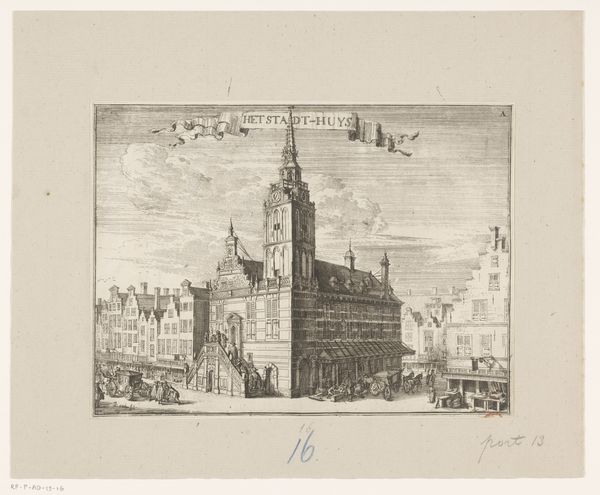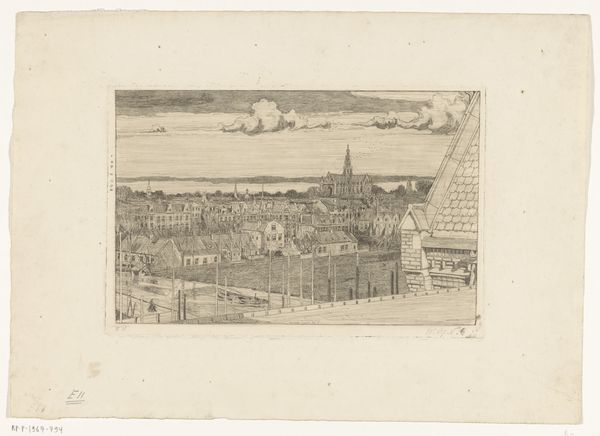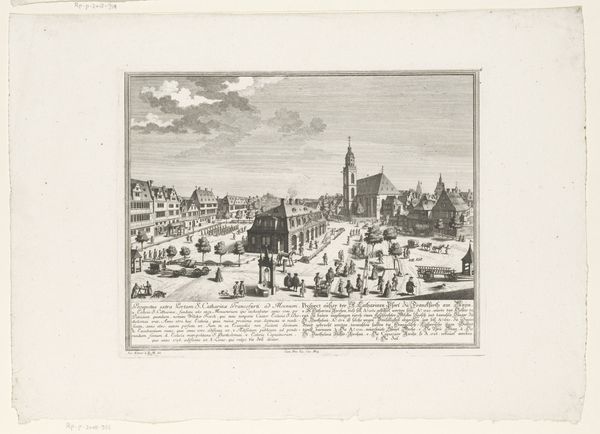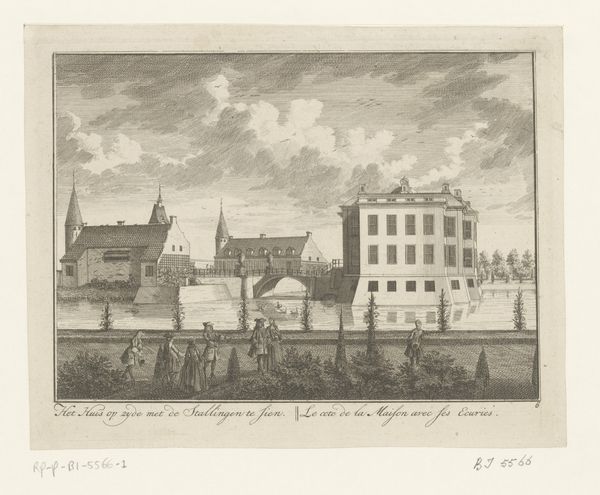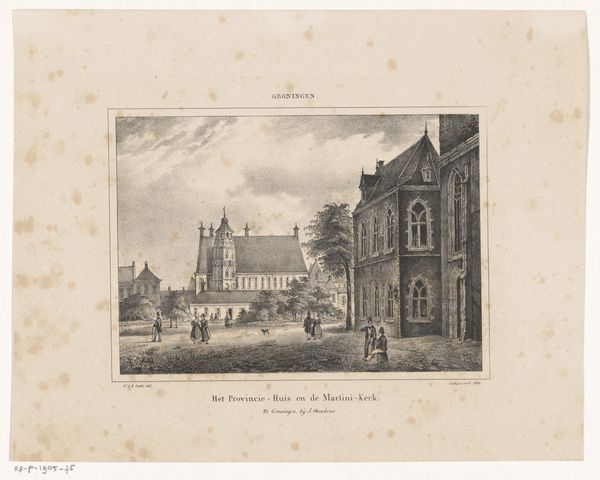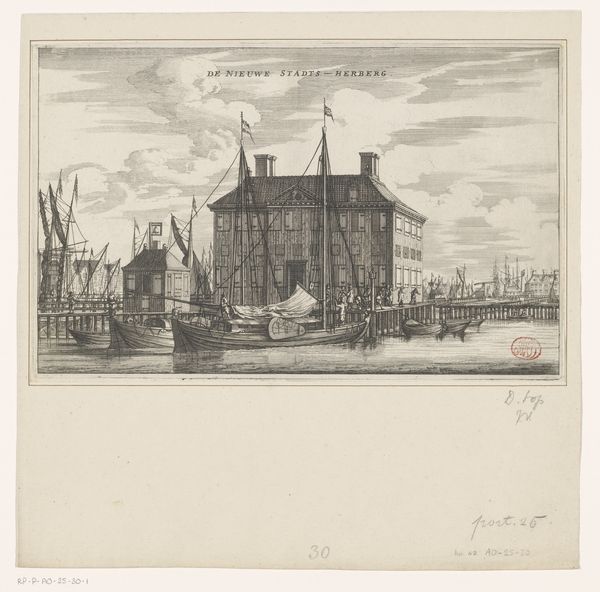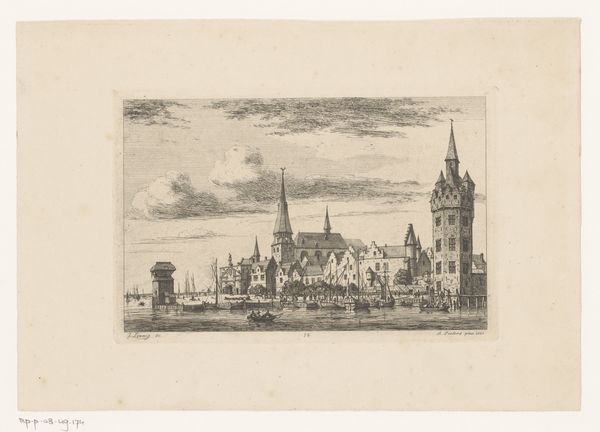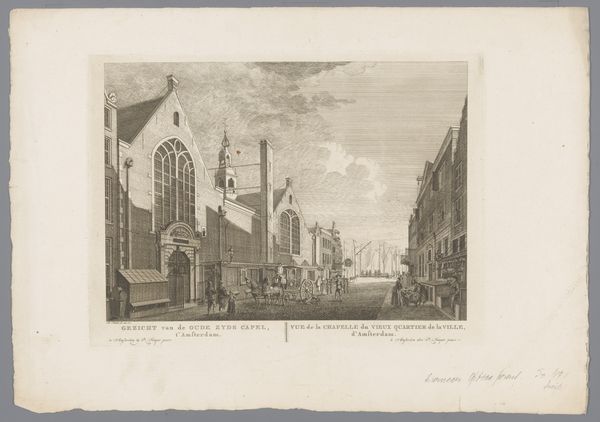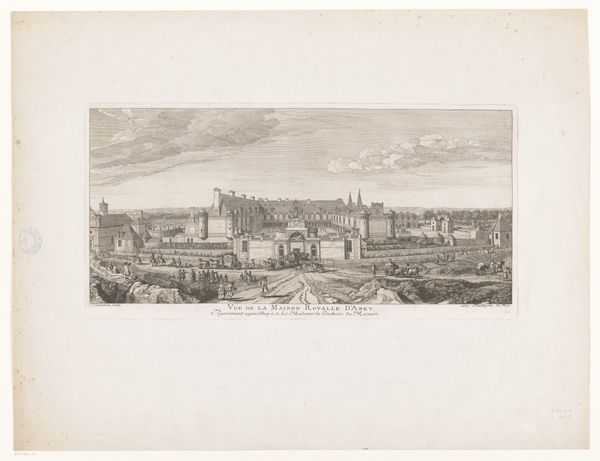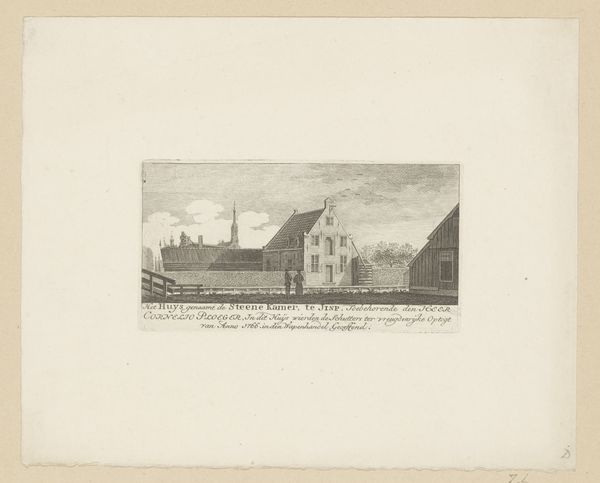
print, etching, engraving
#
baroque
# print
#
etching
#
old engraving style
#
perspective
#
line
#
cityscape
#
engraving
Dimensions: height 147 mm, width 114 mm
Copyright: Rijks Museum: Open Domain
Curator: What strikes me immediately is the intricate detail. The use of line to define form, shadow, and depth—it’s masterful. Editor: Absolutely, it’s a world defined by line, yet devoid of immediate context or explicit narrative. Curator: This etching, entitled "Gezicht te Parijs," offers a perspective of Paris. Created between 1603 and 1650 by Matthäus Merian, the work resides here in the Rijksmuseum. Editor: In the cityscape’s detail, it’s tempting to ignore the figures placed near the foreground on that balcony. They seem disconnected, observing as much as we are. Who do they represent? Curator: Exactly! Those figures are most likely representatives of the privileged merchant class who would have had the money to acquire prints such as this. This image normalizes an assumed relationship between power and viewing. Editor: I notice how the etching technique enables Merian to create sharp contrasts. Light seems to bounce off the architectural surfaces, yet it's still a somber palette. What can that tell us about the symbolism inherent in such a cityscape at that time? Curator: It highlights the disparities of the urban experience: power juxtaposed with vulnerability. Consider, Paris during this era was marked by religious conflict, social unrest, and emerging class consciousness. Editor: And those towering spires—their verticality is so emphasized, as are the rows and rows of repetitive roof tops—speaking to the rising influence of religious institutions, no? Curator: Very much so, indeed. And the architecture speaks volumes about power dynamics during this time. The city emerges through a period of crisis, where urban reform aimed at strengthening governmental and religious authority. Merian is making that visible. Editor: Examining the semiotic encoding here has shown a dialogue between objective cityscape and ideological framework, inviting us to examine whose Paris this actually is. Curator: By shifting focus to those observing merchants in the foreground and away from Paris as a generalized locale of opportunity, Merian reveals something rather critical about that historical moment.
Comments
No comments
Be the first to comment and join the conversation on the ultimate creative platform.
